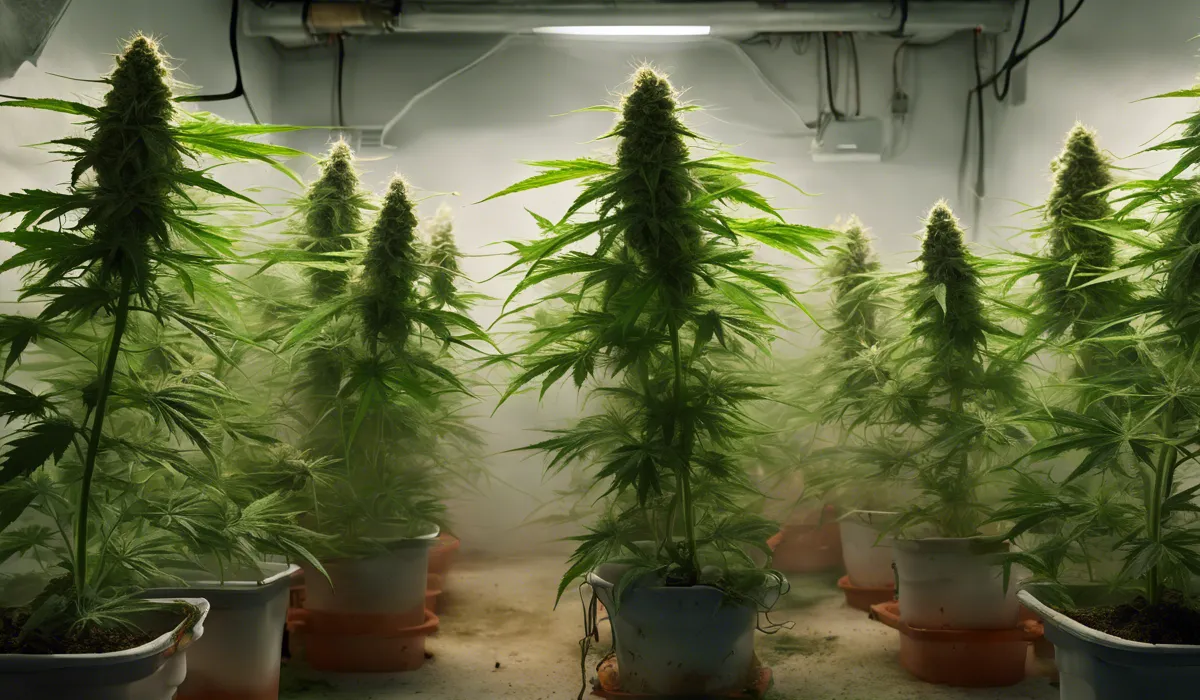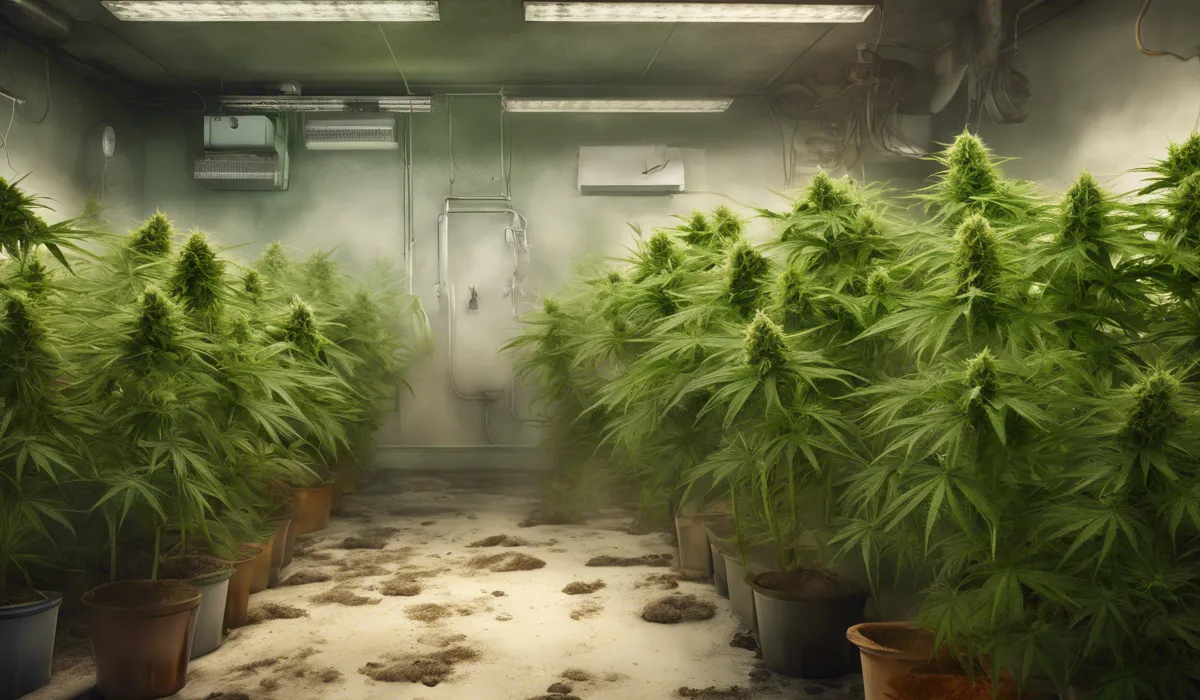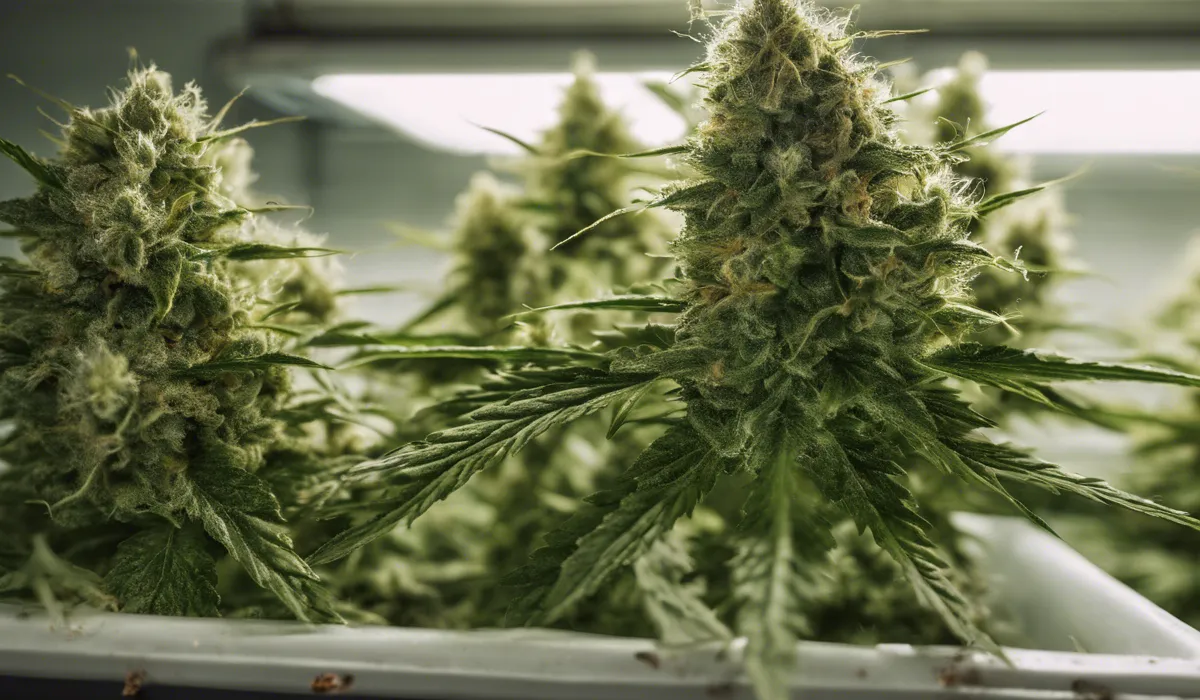Growing weed indoors can cause mold due to high humidity and poor ventilation. It’s essential to monitor air quality and moisture levels to prevent mold growth. Proper air circulation and dehumidifiers can mitigate this risk.
Relationship Between Indoor Cannabis Cultivation and Mold Growth

Understanding Mold in Indoor Environments
Mold is a type of fungus that can be found both indoors and outdoors. In indoor environments, the most common types of mold include Aspergillus, Penicillium, and Cladosporium.
These molds can thrive on any organic material, including wood, paper, and fabric. They reproduce by releasing spores into the air, which can be harmful when inhaled by humans or animals.
Ideal Conditions for Mold to Flourish
Mold requires three main conditions to grow: high humidity, warm temperatures, and organic material to feed on.
The optimal humidity level for mold growth is typically above 55%, and temperatures between 60°F and 80°F create a hospitable environment for mold colonies to expand.
Indoor cannabis gardens, with their rich soil and plant matter, provide an abundance of organic material for mold to consume.
Cannabis Cultivation and Mold-Friendly Conditions
Indoor cannabis cultivation often requires a controlled climate with higher humidity and warmth to optimize plant growth.
These conditions can inadvertently create an ideal breeding ground for mold. Without proper oversight, the very environment that helps cannabis plants thrive can also support harmful mold growth.
Importance of Ventilation and Air Circulation
Ventilation and air circulation play crucial roles in mold prevention. Proper airflow helps reduce moisture buildup on plant leaves and soil, which can deter mold formation.
Good ventilation systems also filter out mold spores from the air, reducing the potential for mold colonies to develop and spread within an indoor cannabis garden.
Preventative Measures to Control Mold in Indoor Cannabis Gardens

Managing Environmental Factors
Controlling temperature and humidity is vital in preventing mold in indoor cannabis cultivation. Utilizing tools like hygrometers and thermostats can help maintain the proper climate.
Keeping relative humidity levels below 55% and temperatures within the ideal range for cannabis but not for mold will mitigate the risk of mold growth.
Strategies for Ventilation and Air Purification
Implementing an efficient ventilation system can greatly reduce the chance of mold formation.
This includes using exhaust fans to expel moist air, and air purifiers with HEPA filters to capture mold spores.
Ensuring that fresh air circulates through the grow area can also help prevent mold.
Cultivation Area Maintenance and Plant Care
Regular cleaning of the cultivation area can prevent mold spores from settling and growing. Inspecting plants for mold signs should be a part of routine maintenance.
Any affected plants or materials need to be removed immediately to prevent the spread of mold to healthy plants.
Watering Techniques and Plant Arrangement
Overwatering can create standing water and high moisture levels conducive to mold growth. Watering plants when the topsoil is dry and ensuring proper drainage can help.
Additionally, spacing plants adequately allows for air to circulate around each plant, reducing humidity and preventing mold.
Choosing Mold-Resistant Cannabis Strains
Some cannabis strains have been developed to be more resistant to mold. Opting for these strains can provide an extra layer of protection against mold issues.
It is also a proactive step in maintaining a healthy indoor cannabis garden.
Identifying and Addressing Mold Issues in Indoor Weed Growth

Detecting Early Signs of Mold
Early detection of mold is crucial. Growers should look for white, fuzzy spots on plant leaves or stems, which are often the first sign of mold presence.
Discoloration and a musty smell can also indicate mold. Regular inspections can help catch these signs early on.
Effects of Mold on Cannabis Plants and Product Quality
Mold can severely affect the health of cannabis plants, leading to decreased growth and yields. Mold-infected plants may also produce lower potency buds.
For consumers, the presence of mold can make the end product unsafe for consumption.
Safe Mold Remediation for Cannabis Cultivation
When mold is detected, it’s essential to act quickly and safely. Infected plant material should be removed and disposed of properly.
Cleaning the area with a safe, plant-friendly fungicide can help eliminate any remaining mold spores. It’s critical to address the underlying issue that led to mold growth to prevent future outbreaks.
Health Risks of Consuming Moldy Cannabis
Consuming moldy cannabis can pose serious health risks, particularly for individuals with compromised immune systems.
Inhaling mold spores can lead to respiratory issues and allergic reactions. Therefore, it is imperative to ensure that all harvested cannabis is free of mold before it reaches consumers.
Legal and Regulatory Aspects of Mold in Cannabis
The presence of mold in cannabis products can have legal and regulatory implications. Many regions have strict standards for acceptable mold levels in cannabis products.
Failure to comply with these standards can result in penalties for growers and loss of consumer trust.
FAQs About Indoor Weed Growth and Mold
Can growing weed indoors lead to mold problems?
Yes, growing weed indoors can lead to mold if the grow area has high humidity and poor ventilation.
How does high humidity affect mold growth in indoor weed cultivation?
High humidity provides the moisture that mold spores need to grow, making it essential to control moisture levels in indoor weed cultivation.
Why is ventilation important in preventing mold when growing weed indoors?
Proper ventilation helps reduce moisture and prevents stagnant air, both of which are crucial in preventing mold growth in indoor weed gardens.
What tools can be used to control humidity and prevent mold in indoor weed cultivation?
Dehumidifiers and good air circulation systems are effective tools for controlling humidity and preventing mold in indoor weed cultivation.
How can you monitor air quality to prevent mold when growing weed indoors?
To prevent mold, it’s essential to regularly monitor air quality and moisture levels using hygrometers and by visually inspecting plants and surfaces for signs of mold.
Final Thoughts
Indoor cannabis cultivation can lead to mold due to high humidity and inadequate airflow. It is critical to regularly check air quality and moisture levels.
Employing proper ventilation and using dehumidifiers are effective strategies to reduce the risk of mold in indoor weed growing environments.
